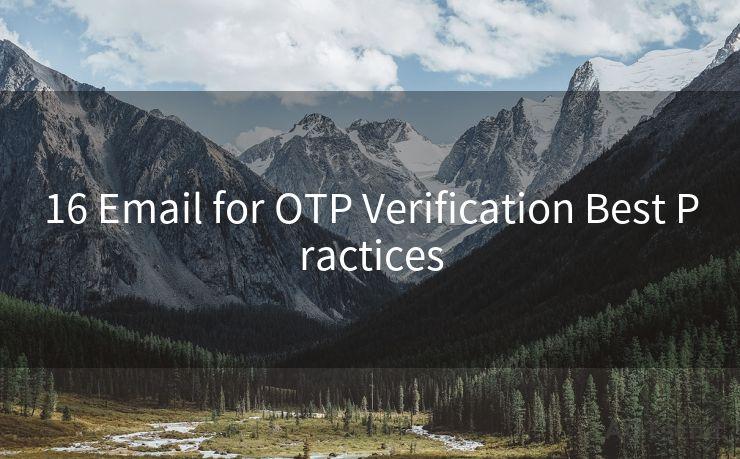16 Email for OTP Verification Best Practices




When it comes to online security, One-Time Password (OTP) verification stands as a crucial line of defense. Among various OTP delivery methods, email remains a popular choice due to its ubiquity and reliability. However, to ensure the effectiveness of email-based OTP systems, it's essential to adhere to best practices. Here are 16 best practices for email OTP verification that can enhance your security posture.
🔔🔔🔔
【AOTsend Email API】:AOTsend is a Managed Email Service for sending transactional emails. Support Email Types: reminders, authentication, confirmations, notifications, verification codes, invoices, password resets, account activations, billing statements, two-factor authentication (2FA), and one-time passwords (OTP) emails, etc. $0.28 per 1000 Emails. 99% Delivery, 98% Inbox Rate.
You might be interested in:
Why did we start the AOTsend project, Brand Story?
What is a Managed Email API, How it Works?
Best 25+ Email Marketing Platforms (Authority,Keywords&Traffic Comparison)
Best 24+ Email Marketing Service (Price, Pros&Cons Comparison)
Email APIs vs SMTP: How they Works, Any Difference?
1. Use Secure Email Servers
Ensure your email servers are secure and utilize the latest encryption standards. This prevents OTPs from being intercepted during transmission.
2. Strong Authentication
Implement multi-factor authentication for accessing email servers. This adds another layer of security, making it harder for unauthorized access.
3. Clear and Concise Messaging
The email should clearly state the purpose of the OTP and provide clear instructions on how to use it. Avoid confusion by keeping the message simple and direct.
4. OTP Expiration

Set a reasonable expiration time for the OTP. This mitigates the risk of OTPs being used after their intended purpose or being compromised.
5. Limit OTP Reuse
Ensure that each OTP can only be used once and for a specific action. This prevents replay attacks where an attacker reuses a previously intercepted OTP.
6. Monitor and Respond to Suspicious Activity
Have a system in place to monitor for unusual or suspicious email activity related to OTPs. Respond swiftly to any detected threats.
7. Secure Storage of OTPs
If you must store OTPs, ensure they are securely encrypted and accessible only to authorized personnel.
8. User Education
Educate users on the importance of OTPs and how to handle them securely. This includes not sharing OTPs with anyone and being cautious of phishing attempts.
9. Unique OTPs for Each Action
Generate unique OTPs for each verification action. This ensures that even if one OTP is compromised, others remain secure.
10. Test Your System Regularly
Conduct regular tests to ensure the OTP system is working as intended. This includes testing delivery, expiration, and redemption processes.
11. Use HTTPS for OTP Links
If you provide links in the email for OTP verification, ensure they use HTTPS to encrypt the connection and protect against man-in-the-middle attacks.
12. Avoid Plain Text Storage
Never store OTPs in plain text. Always use secure hashing or encryption methods to protect stored OTPs.
13. Implement Rate Limiting
Set rate limits on OTP requests to mitigate brute-force attacks and automated attempts to guess OTPs.
14. Audit Logs
Maintain detailed audit logs of all OTP-related activities. This helps in identifying and responding to security incidents.
15. Redundancy and Backup
Ensure your OTP system has redundancy and backup measures in case of failures or disasters.
16. Stay Updated on Security Best Practices
Keep up with the latest security best practices and adapt your OTP system accordingly. Security is an evolving field, and it's crucial to stay vigilant.
By following these best practices, you can significantly enhance the security of your email-based OTP verification system. Remember, security is a layered approach, and each of these practices contributes to a stronger overall defense.




Scan the QR code to access on your mobile device.
Copyright notice: This article is published by AotSend. Reproduction requires attribution.
Article Link:https://www.mailwot.com/p2136.html



